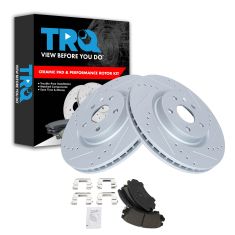1ABFS01122-Chevrolet Caprice Front Ceramic Brake Pad & Rotor Kit TRQ BKA11013

Replaces
2017 Chevrolet Caprice Front Ceramic Brake Pad & Rotor Kit TRQ BKA11013

Product Reviews
Loading reviews
There are no reviews for this item.
Customer Q&A
No questions have been asked about this item.
Chevrolet is a registered trademark of General Motors Company. 1A Auto is not affiliated with or sponsored by Chevrolet or General Motors Company.
See all trademarks.











